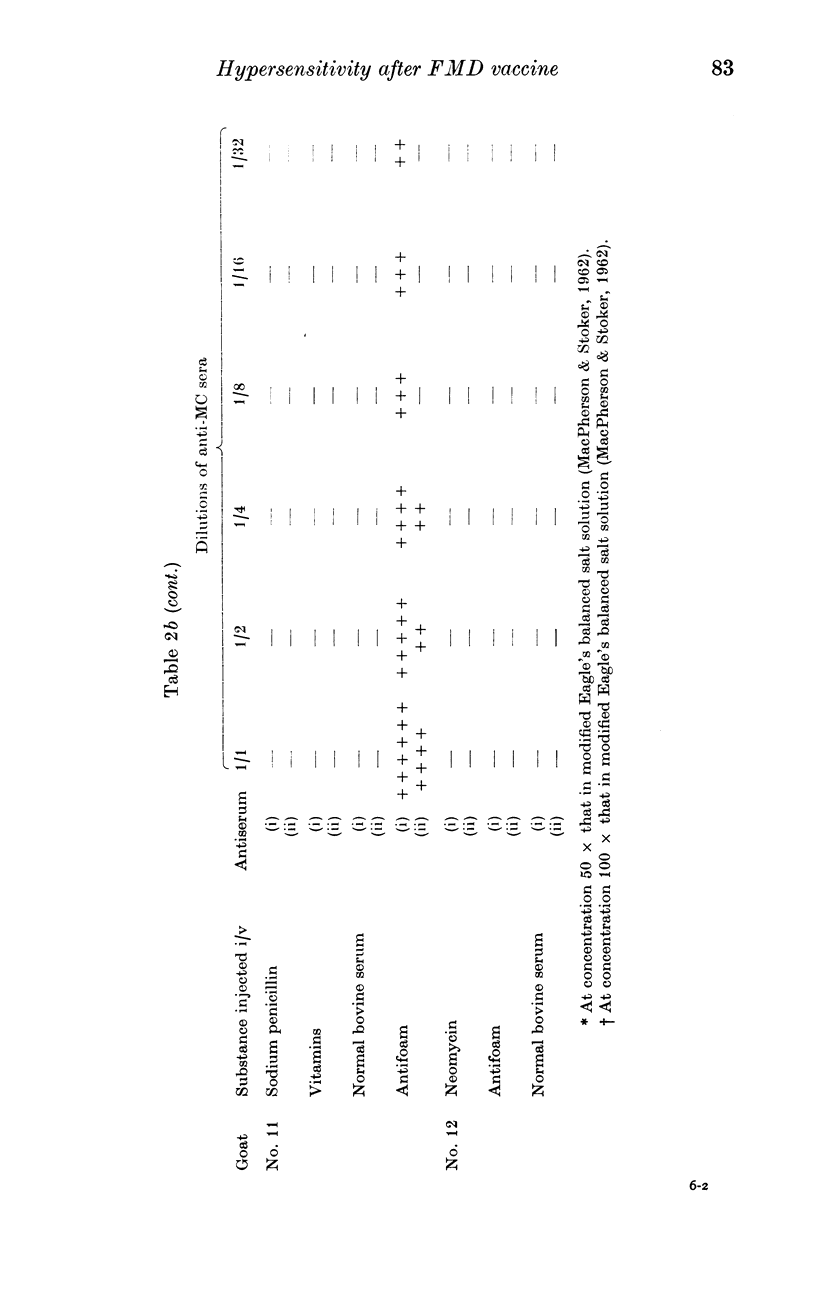Abstract
Intravenous provocation (IVP) tests demonstrated that hydroxypropylmethylcellulose (MC) was able to elicit anaphylactic signs in cattle vaccinated with foot-and-mouth disease (FMD) vaccine produced at one centre but not with similar vaccine produced at another. The former vaccine also provoked serum reagins which were demonstrated by passive cutaneous anaphylaxis (PCA) tests in goats. Reaginic sera which reacted specifically with MC were used in PCA tests to screen samples taken serially from the vaccine production lines. The reactions observed suggested that a substance with MC or similar specificity was present in the antifoaming agent routinely added to vaccines.
Full text
PDF








Images in this article
Selected References
These references are in PubMed. This may not be the complete list of references from this article.
- Beadle G. G., Pay T. W. Reaginic antibody in cattle hypersensitised by foot-and-mouth disease vaccine. Res Vet Sci. 1975 Jul;19(1):1–7. [PubMed] [Google Scholar]
- Black L., Pay T. W. The evaluation of hypersensitivity tests in cattle after foot-and-mouth disease vaccination. J Hyg (Lond) 1975 Apr;74(2):169–181. doi: 10.1017/s0022172400024232. [DOI] [PMC free article] [PubMed] [Google Scholar]
- Leemann W., De Weck A. L., Schneider C. H. Hypersensitivity to carboxymethyl-cellulose as a cause of anaphylactic reactions to drugs in cattle. Nature. 1969 Aug 9;223(5206):621–623. doi: 10.1038/223621a0. [DOI] [PubMed] [Google Scholar]
- MACPHERSON I., STOKER M. Polyoma transformation of hamster cell clones--an investigation of genetic factors affecting cell competence. Virology. 1962 Feb;16:147–151. doi: 10.1016/0042-6822(62)90290-8. [DOI] [PubMed] [Google Scholar]
- McCOLLISTER D. D., OYEN F. Dietary feeding of a new methylcellulose preparation to rats. J Am Pharm Assoc Am Pharm Assoc. 1954 Nov;43(11):664–666. doi: 10.1002/jps.3030431111. [DOI] [PubMed] [Google Scholar]
- Platt D., Bicanovsky J. E., Dalbow M. H., Thonard J. C. Antigenicity of a carboxymethylcellulose bovine serum albumin glycoprotein in conventional and germ-free mice. Nature. 1966 Jan 8;209(5019):214–215. doi: 10.1038/209214a0. [DOI] [PubMed] [Google Scholar]
- Straub R., Lazary S., Gerber H., De Weck A. L., Schatzmann U., Pauli B. Sensibilisierungsversuche mit Dexamethason und Carboxy-methylcellulose beim Pferd. Schweiz Arch Tierheilkd. 1972 Sep;114(9):439–449. [PubMed] [Google Scholar]



